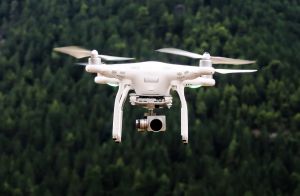Test Owner
Space exploration in Europe is about to take a giant leap forward. This week, Norway and Germany inked a landmark agreement that could rewrite the history books. The declaration paves the way for Isar Aerospace, a German company, to launch its first satellite from Andøya Spaceport, a newly operational space facility nestled on the island of Andøya in northern Norway. This much-anticipated launch, slated for the latter half of 2024, has the potential to be the very first satellite launch from mainland Europe, a momentous occasion for the continent's spacefaring ambitions.
The newly signed agreement tackles a crucial aspect of international space cooperation – legal responsibilities. The document meticulously outlines the obligations of both Norway and Germany as dictated by international space law. This includes, among other things, establishing clear lines of financial accountability in the unlikely event of an accident. This agreement acts as a missing puzzle piece, finally allowing Isar Aerospace to proceed with its launch plans with confidence.
This collaboration signifies a turning point for Europe's space program. The Andøya Spaceport, strategically located and boasting a highly skilled workforce, is poised to become a central hub for future European space activities. Norway's Trade and Industry Minister, Cecilie Myrseth, hailed the agreement as a major milestone. She underscored the importance of Germany as a key strategic partner in this endeavor and expressed her unwavering belief in the immense value this project holds for both Norway and Europe. The potential benefits extend far beyond the launch itself. A successful mission would undoubtedly inspire a new generation of European scientists and engineers, fostering innovation and propelling the continent's space ambitions to new heights.
Activity is already bustling at Andøya Spaceport. The launchpad specifically designated for Isar Aerospace's pathfinder mission is undergoing meticulous preparations to ensure a seamless launch. If everything falls into place as planned, this launch will not only be a historic moment for Norway and Germany, but it will also serve as a beacon of hope and inspiration for the entire European spacefaring community. The successful execution of this mission would mark the dawn of a new era for European space exploration, paving the way for a future filled with exciting discoveries and groundbreaking achievements. The wait is on, and anticipation is building across Europe as the continent prepares to witness a potential first – a satellite launch from its very own soil.
As the business aviation sector strives to enhance its environmental impact, sustainable aviation fuel (SAF) emerges as a crucial strategy for achieving net zero emissions by 2050. A recent panel at EBACE featured experts from Air bp, Signature Aviation, World Fuel Services, and VistaJet, who discussed the entire SAF ecosystem, from feedstocks to regulatory mandates.
In a significant step last year, the European Parliament and European Council agreed on the ReFuelEU proposal, which mandates a gradual increase in blended SAF usage starting next year. According to Keith Sawyer, Avfuel’s manager of alternative fuels, fuel suppliers must provide a 2% SAF blend by 2025, scaling up to 70% by 2050. The exact qualifying blend ratio is still under determination.
The UK is also implementing a similar proposal starting early next year, requiring a 10% blend by 2030 and commencing a SAF usage mandate in 2025. Norway, Sweden, and France have already introduced SAF mandates.
Currently, global SAF production represents less than 1% of jet fuel consumption, with most SAF produced via the HEFA pathway—synthetic paraffinic kerosene from used cooking oils, fats, and greases. While HEFA is a first-generation SAF, concerns about feedstock availability persist. Avfuel executive vice president C.R. Sincock highlighted the challenge of significantly scaling up HEFA SAF production beyond the current sub-1% level.
Daniel Coetzer, CEO of Titan Fuels International, noted slow growth in the European SAF market, largely reliant on HEFA. Despite government financing and subsidies for refinery upgrades, feedstock shortages remain a hurdle. Coetzer remarked on the limited availability of materials like used cooking oil, emphasizing the need for alternative feedstocks.
Fortunately, new technologies and production pathways are emerging. Second-generation SAF pathways, such as alcohol-to-jet, use feedstocks like ethanol from crops, though political and environmental considerations complicate their adoption. In the U.S., only 2% of the corn crop is used for human consumption, highlighting potential feedstock sources.
Honeywell's recent improvements to its Unicracking technology, which employs the Fischer-Tropsch process, allow processing a wider range of biomass feedstocks into SAF. Over 50 sites globally have licensed Honeywell's SAF technologies, with a projected combined capacity of more than 500,000 barrels per day when fully operational.
Power-to-liquid technology, which produces SAF from hydrogen and carbon dioxide using electricity, offers a promising long-term solution. Sincock noted its scalability and sustainability, provided the electricity used is renewable.
Currently, 59 renewable refineries are planned or under conversion globally, including projects by Total, Repsol, SkyNRG, and ENI. However, sourcing SAF remains a challenge. Coetzer recounted a customer's difficulty in purchasing bulk SAF, underscoring the nascent state of the market compared to conventional jet fuel.
Concerns about meeting SAF mandates persist, given the industry's current capabilities. Coetzer questioned the feasibility of the targets and the speed at which they are being implemented, suggesting a need for more consultation and realistic timelines.
SAF is approved for use up to 50% blends with conventional jet-A, due to the need for aromatic compounds in petroleum to ensure proper functioning of aircraft fuel systems. In its pure form, SAF can reduce life cycle carbon dioxide emissions by up to 80%, as demonstrated by aircraft testing from Gulfstream and Embraer.
Blended SAF is available at around 30 European airports, with regulations prioritizing larger airports. Sawyer explained that fuel suppliers must prioritize airports with over 800,000 passengers annually, impacting business aviation's access to SAF at major hubs like Schiphol and Frankfurt.
In anticipation of the Paris Summer Olympics, Avfuel announced permanent SAF supplies at three French airports: Paris Le Bourget, Bordeaux-Mérignac, and Clermont-Ferrand Auvergne. The 30% SAF blend, produced from used cooking oil, offers a significant reduction in carbon emissions.
European operators are becoming more knowledgeable about SAF. Noel Siggery of AEG Fuels observed a shift in understanding and demand for SAF among general aviation operators, with some seeking higher blend percentages for their aircraft.
Despite SAF's compatibility with conventional jet-A, logistical challenges remain in ensuring widespread availability across all regions. Siggery emphasized the need for sustainable transportation and distribution of SAF to smaller and regional airports.
The journey toward widespread SAF adoption involves overcoming production, distribution, and regulatory challenges. However, the potential for substantial carbon emission reductions makes SAF a key component of the aviation industry's future.
Embraer-X, the technology incubator and 'market accelerator' arm of the renowned Brazilian aerospace manufacturer Embraer, has recently initiated a groundbreaking partnership with the Sustainable Aero Lab based in Hamburg, Germany. This collaborative endeavor aims to propel Embraer's initiatives towards the decarbonization of aviation. The announcement of this joint venture was made by Embraer-X earlier this week, signaling potential new investments in startups with a specific focus on advancing energy transition within the air transport industry.
The Sustainable Aero Lab functions as a conduit for technology startups, connecting them with mentors, investors, and potential customers and partners to foster innovation in the aviation sector. Supported by key sponsors such as the Hamburg Investment and Development Bank and the Breakthrough Energy consortium, the lab was established with the backing of prominent entities including the Hamburg Aviation aerospace cluster, Germany's ZAL Center for Applied Aeronautical Research, and Density Ventures.
Embraer aims to drive progress in its Energia future aircraft program, which centers on the development of hybrid-electric and hydrogen fuel-cell propulsion technology for next-generation 19- and 30-seat regional airliners. Additionally, its subsidiary, Eve Air Mobility, is actively engaged in designing a four-passenger eVTOL aircraft.
Stephan Uhrenbacher, founder and CEO of the Sustainable Aero Lab, expressed enthusiasm about the collaboration with Embraer-X, highlighting the enhanced mentorship program for aviation startups worldwide. The overarching goal is to tangibly reduce the climate footprint of aviation by synergizing support initiatives, facilitating access to resources, and fostering collaboration among startups, infrastructure providers, and industry experts. Together, Embraer-X and the Sustainable Aero Lab aspire to pave the way for a sustainable future in aviation.
Lockheed Martin and MilDef have inked a memorandum of understanding (MoU) aimed at elevating Sweden's aerospace capabilities. This collaboration signals a significant step forward in industrial cooperation within the realm of tactical airlifters.
Lockheed Martin, a key player in global security and aerospace, is teaming up with MilDef, renowned for its tactical IT solutions, to explore innovative avenues of collaboration within Sweden’s aerospace sector. The unveiled MoU underscores the pivotal role of industrial partnerships in bolstering national defense capabilities.
At the heart of this partnership is Lockheed Martin’s C-130J-30 Super Hercules tactical airlifter, poised to enhance the operational prowess of the Swedish Air Force (SwAF). Leveraging MilDef’s solutions, Lockheed Martin aims to integrate advanced technologies into its aerospace and defense ecosystem.
Tony Frese, Lockheed Martin's vice president of business development, highlights the synergies between the two entities, emphasizing their specialization in supporting tactical mission demands with advanced and integrated solutions.
MilDef’s CEO, Daniel Ljunggren, echoes Frese’s sentiments, stressing the importance of industrial collaboration in delivering optimal solutions to end customers.
Sweden’s existing collaborations with Lockheed Martin, including the deployment of the Sikorsky UH-60M Black Hawk helicopter and the Patriot Advanced Capability-3 (PAC-3) Missile Segment Enhancement (MSE) interceptor system, further solidify the strategic partnership’s foundation.
The C-130J-30 Super Hercules, renowned for its operational readiness and tactical airlift capabilities, emerges as a frontrunner in Sweden’s efforts to modernize its C-130H fleet. With 26 operators across 22 nations, including Denmark and Norway, the C-130J-30 offers interoperability and cost-effective solutions.
As per GlobalData’s “Sweden Defense Market 2023-2028” report, the Swedish Air Force currently operates six C-130H transport aircraft acquired from Lockheed Martin between 1975 and 1981.
With the global fleet of C-130Js nearing three million flight hours, the strategic alliance between Lockheed Martin and MilDef heralds a new era in Sweden’s aerospace landscape, promising enhanced capabilities in the domain of tactical airlifters.
"Parliamentary Milestone: Germany Votes to Streamline Citizenship Procedures and Embrace Dual Nationality"
The German parliament has granted approval for legislation aimed at facilitating the acquisition of citizenship and removing restrictions on holding dual citizenship last friday. The proposal, advocated by Chancellor Olaf Scholz's center-left, socially liberal coalition, garnered a majority vote of 382-234, with 23 lawmakers abstaining. While the government contends that the move will enhance immigrant integration and attract skilled labor, the main center-right opposition criticizes it, asserting that it could devalue German citizenship.
The approved legislation reduces the residency requirement for citizenship eligibility from eight to five years, or three years in the case of "special integration accomplishments." German-born children automatically become citizens if one parent has been a legal resident for five years, down from the current eight years. Additionally, the law eliminates restrictions on dual citizenship, a departure from the existing requirement that individuals from countries outside the European Union and Switzerland relinquish their previous nationality upon gaining German citizenship.
The government notes that 14 percent of the population, over 12 million out of 84.4 million inhabitants, lacks German citizenship, with around 5.3 million having resided in Germany for at least a decade. Germany's naturalization rate is reportedly below the EU average. In 2022, 168,500 people were granted German citizenship, the highest figure since 2002, with a notable increase in Syrian citizens being naturalized.
Interior Minister Nancy Faeser emphasizes that the reform aligns Germany with European neighbors like France and aims to attract skilled workers. The legislation specifies that those seeking naturalization must be able to support themselves and their dependents, with exceptions for "guest workers" who came to West Germany before 1974 and those who arrived in communist East Germany to work.
The existing requirement for citizenship applicants to adhere to the "free democratic fundamental order" is retained, with the new version explicitly stating that antisemitic and racist acts are incompatible with this commitment. However, the conservative opposition argues that Germany is relaxing citizenship requirements at a time when other countries are tightening theirs, describing the legislation as a "citizenship devaluation bill."
The citizenship law overhaul is part of a broader series of social reforms agreed upon by Scholz's three-party coalition upon taking office in late 2021.
"SAP S/4HANA 2024 Trends: Navigating Transformation Challenges and Embracing Innovation"
In the dynamic landscape of modern business, SAP S/4HANA stands as a transformative force in the evolution of Enterprise Resource Planning (ERP) solutions. Beyond its traditional back-office role, SAP S/4HANA extends its influence to front-end operations, making it an essential cornerstone for business success. As we delve into 2024, let's explore the trends that are shaping the future of SAP S/4HANA and the challenges that organizations may encounter on this transformative journey.
Trends Shaping SAP S/4HANA in 2024:
Cloud-First Approach: The adoption of a cloud-first approach with SAP S/4HANA is no longer a future consideration but a present necessity. Businesses are leveraging the platform's flexibility, scalability, and accessibility, enabling seamless operations from anywhere in the world.
AI and Machine Learning Integration: In 2024, SAP S/4HANA transcends being just a system; it becomes an intelligent system. The integration of artificial intelligence (AI) and machine learning (ML) takes center stage, enhancing predictive analytics, automating routine tasks, and providing valuable insights for informed decision-making.
Enhanced User Experience - Going Mobile: User experience takes precedence, with SAP's user interface evolving to offer an intuitive and user-friendly experience. The mobile-first approach gains momentum, optimizing for mobile devices and prioritizing responsive web design for an engaging user experience on the go.
Greater Emphasis on Cybersecurity: With the increasing digitization of business processes, robust cybersecurity measures are becoming crucial for SAP S/4HANA transformations in 2024. These measures safeguard sensitive data and ensure the integrity of business operations.
Challenges Associated with SAP S/4HANA Integration:
Data Migration Complexity:Transitioning to SAP S/4HANA often involves extensive data migration, presenting a challenge in ensuring a smooth transition while maintaining the integrity and accuracy of data.
Integration with Third-Party Systems: Organizations with complex IT landscapes and various third-party systems may face integration challenges. Close collaboration with third-party vendors and thorough testing become essential in overcoming this challenge.
Skillset Alignment: The advanced features of SAP S/4HANA demand a workforce with the right skills. Upskilling existing teams or sourcing talent familiar with the intricacies of the system poses a challenge for business owners.
Customization vs. Standardization Balance: Striking the right balance between customization to meet specific business needs and embracing standardization for efficiency is an ongoing challenge. Business owners must navigate this balance to optimize their SAP S/4HANA implementation.
Security and Compliance: Ensuring the security and compliance of the integrated S/4HANA system is paramount. Meeting industry regulations and safeguarding sensitive data present ongoing challenges that organizations need to address.
As SAP S/4HANA continues to evolve in 2024, organizations must embrace the trends that drive innovation while being mindful of the challenges associated with integration. Navigating this transformative journey requires strategic planning, collaboration, and a commitment to overcoming obstacles to unlock the full potential of SAP S/4HANA for enhanced business success.
The commencement of the Aerospace City project marked a significant milestone on Tuesday as the foundation stone for the new laboratories at Polytechnic University in Turin, Northern Italy, was laid. This initiative aims to establish an integrated ecosystem fostering education, research, innovation, and enterprise within the aerospace sector. The focal points of research will include hybrid-electric propulsion, power generation, and space exploration.
With an initial investment of €700 million, the project is anticipated to have a substantial economic impact, surpassing €750 million on the GDP. Upon completion, the new facility is set to accommodate 5,000 individuals.
The vision is to create a comprehensive aerospace ecosystem, synergizing education, research, innovation, and enterprise across the entire value chain. The ultimate goal is to establish Turin as a global reference center in the space economy.
In a strategic move, Turin is slated to host a G-7 summit in 2024, focusing on artificial intelligence, the digital economy, and space. Enterprise Minister Adolfo Urso emphasized Turin's growing significance in Italy's technological landscape, indicating a shift towards sectors like space debris control and a human return to the Moon by 2030.
Notable Italian aerospace giants, including Leonardo, Thales Alenia Space, Avio Aero, and Altec, are integral to the Aerospace City project. Their involvement spans areas such as technology hubs, Moon and Mars missions, clean aviation propulsion systems, and the establishment of a National Space Centre. The cumulative investment across these initiatives is expected to reach approximately €1 billion by 2028.
Luisa Riccardi, Deputy Secretary-General of Defence, emphasized the national importance of this project, positioning Turin, Piedmont, and Italy as a global reference center in the space economy. She highlighted the essential role of space technology in addressing critical issues like climate change and national security.
Teodoro Valente, President of the Italian Space Agency, envisioned Turin's Aerospace City as an international hub attracting talent, fostering frontier technologies, and consolidating Italy's industrial heritage in the space sector. With 300 companies, 7,000 employees, and an annual turnover exceeding €2 billion, Italy's space industry is well-positioned for growth.
Leonardo's CEO, Roberto Cingolani, anticipates an unprecedented role for space in the company's upcoming industrial plan. With a focus on strengthening activities and rationalizing product lines and strategies, Leonardo plans to establish four research laboratories on campus, signaling a significant commitment to space-related endeavors in the coming years.
"Zaragoza Hosts Pioneering Flight Test Campaign for Unmanned Traffic Management Integration"
Zaragoza, Spain, recently hosted a groundbreaking flight test campaign, marking a significant milestone in European aviation. This campaign marked the first-ever simultaneous integration of three unmanned traffic management providers in Europe as part of the U-ELCOME unmanned drone project.
The U-ELCOME project, led by EUROCONTROL, is dedicated to ushering unmanned airspace management technologies and processes into Europe, aligning with the EU's U-Space initiative. To achieve this goal, the project conducted a series of tests and demonstrations across 15 locations in Spain, Italy, and France, focusing on various operational environments.
A key aspect of U-ELCOME's mission is to enhance communication between Common Information Services (CISP) and U-Space Service Providers (USSPs) and their respective operators, as well as fostering effective communication between USSPs.
The tests conducted in Zaragoza yielded successful results, validating the communication processes with the involved stakeholders. USSPs actively participated in the operations through the ENAIRE U-Hub platform, which serves as an extended component of the CISP. Furthermore, the security of communications was successfully verified.
Several organizations, including ENAIRE, the Galician Technological Institute (ITG), Aslogic, Umiles, and Primecor, played pivotal roles in achieving this milestone in the field of air navigation, as part of the U-ELCOME project.
Isabel Buatas, the head of Hera Drone Hub and one of the project's partners, commented on the demonstration, highlighting its relevance in addressing emergency scenarios. She explained, "In this demo, an emergency use case was presented. During a routine drone flight operation, an emergency arises, and the authority itself, National Police, City Council, Fire Department, can activate a secure volume within the ENAIRE platform. A CISP can enter that scenario, thus allowing them to communicate from the platform itself to the operators about the situation so that they can vacate that airspace promptly."
These tests were attended by various authorities, including representatives from the Regional Government of Aragon, Zaragoza City Council, Zaragoza Air Base, National Police, and the Fire Brigade. Additionally, organizations such as the Aragon Logistics Cluster (ALIA), Mobility City, Bluenest, and ELA Aviation, which provided a gyroplane for testing, were also present. The comprehensive support from these entities has established Zaragoza as an ideal location for implementing the U-space scenario, offering a complete ecosystem for advanced mobility.
Isabel Buatas further emphasized the importance of initiatives like the U-ELCOME project, aiming to support and promote the future service activity that drones will provide. The project's ultimate objective is to enable drones to share airspace with other legitimate users, with the goal of achieving routine operations by 2026, consequently ushering in new business models within the aviation industry.
Embraer and the German Aerospace Center (Deutsches Zentrum für Luft-und Raumfahrt; DLR) have formalized a partnership aimed at advancing aviation technology. In a joint announcement, the two entities revealed the signing of a Memorandum of Understanding (MoU) to facilitate precompetitive technology research and development initiatives.
The collaboration entails an exploration of potential cooperative efforts encompassing a diverse array of activities, including Aircraft Design, Flight Systems, Flight Physics, System Architectures, Flight Tests, Wind Tunnel Experiments, Structures and Materials, and Security.
Maurílio Albanese Novaes Júnior, the Head of Research & Technology Development at Embraer, expressed enthusiasm about the extended partnership, highlighting the company's enduring relationship with DLR. He emphasized that this agreement marks a pivotal stride in their technological journey toward a sustainable aviation future, achieved in close cooperation with leading global research institutions.
Prof. Anke Kaysser-Pyzalla, Chair of the DLR Executive Board, echoed this sentiment, underlining the significance of intensified collaborative activities. She stressed the essential role of international cooperation in achieving the shared objective of environmentally responsible aviation. Prof. Kaysser-Pyzalla explained that together with their partner, Embraer, they will tackle various aviation-related challenges, including aspects of aerodynamics and flight physics, as well as the conduct of wind tunnel experiments and flight tests.
The collaboration between DLR and Embraer dates back to 2001, with both entities having previously collaborated on distinct projects. Their joint efforts have yielded significant results in various fields, including research into ice formation on aircraft, aerodynamics modeling, and aeroelasticity. In 2017, the partnership took on a deeper focus, centering on sustainability initiatives that address concerns like noise reduction and minimizing aviation's impact on the climate.
Lilium, a company based in Germany, has successfully secured an additional $250 million in funding for its electric vertical take-off and landing aircraft (eVTOL), bringing their total fundraising efforts to nearly $1.2 billion. The eVTOL being developed by Lilium is notably advanced compared to other air taxi designs currently in progress in Europe. It boasts a five-seater configuration and features a rotating wing design. The platform conducted its maiden test flight back in 2019, and currently, a 40% scale model is undergoing testing in a European wind tunnel.
The development of this innovative aircraft has necessitated collaborations for cutting-edge technology. Lilium has partnered with Customcells in Germany to create new silicon battery designs, and they've also incorporated new electric motors from Schuebeler Technologies. Furthermore, gaining approval for this entirely new class of aircraft has presented formidable challenges.
In March 2021, Lilium made its shares available on the Nasdaq stock market. According to a recent U.S. filing, Chinese investor Tencent pre-funded the acquisition of $100 million worth of shares and committed to pre-fund an additional $75 million in shares, contingent upon Lilium securing a matching $75 million. As of now, the company holds $157.5 million in cash reserves, and this new funding is expected to cover a significant portion of the capital required to achieve the first manned flight of the type-conforming aircraft, scheduled for the second half of 2024. Lilium anticipates receiving substantial pre-delivery payments (PDPs), which will assist in funding their future capital needs.
Klaus Roewe, CEO of Lilium, expressed enthusiasm about this financing round, emphasizing its significance in their mission to revolutionize the aviation industry. He mentioned that they are engaged in constructive discussions with both existing and potential new investors and expect to provide further updates soon.
Presently, Lilium is conducting wind tunnel tests with a 40% scale model of their aircraft at the German-Dutch Wind Tunnels (DNW) facility in Marknesse, Netherlands. This model includes functional engines and flap actuators, with each flap being remotely actuated and equipped with electric ducted fans, all built to scale by Schuebeler. The wind tunnel tests are designed to gather comprehensive aerodynamic data, validating their flight physics and performance predictions across the complete aircraft flight envelope, from hover to cruise.
The scale model adheres to the latest Lilium Jet design by TGR-E, a provider of high-end manufacturing solutions, with support from aerospace design specialists IBK-Innovation. The DNW wind tunnels have a history of contributing to the development of major aircraft, including Airbus models and Embraer's E-jet family, making them a crucial resource for Lilium's ambitious aircraft program.
Alastair McIntosh, Chief Technology Officer at Lilium, expressed excitement about this crucial step in their aircraft program. He highlighted the impressive cooperation with DNW, the support provided by TGR-E and IBK, and the significance of generating extensive aerodynamics data to enhance confidence in their design tools as they prepare for the final assembly stage later this year.














